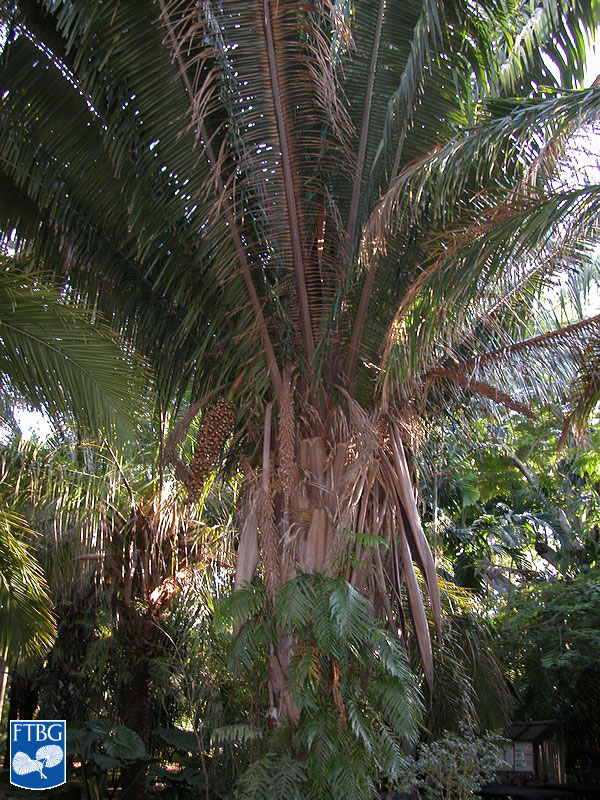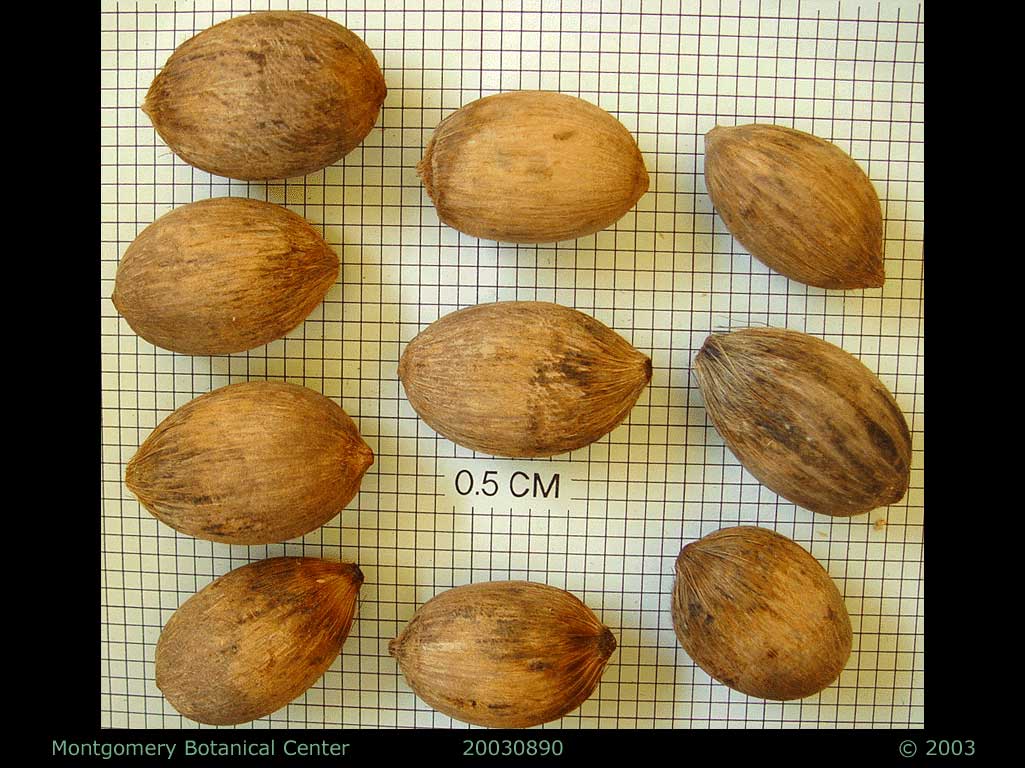Attalea cohune
|
Attalea cohune in the landscape. Photograph courtesy of Fairchild Tropical Botanical Garden, Guide to Palms http://palmguide.org/index.php |
|
Attalea cohune fruit. Photograph courtesy of Fairchild Tropical Botanical Garden, Guide to Palms http://palmguide.org/index.php |
|
Attalea cohune seeds. (MBC photo: 030890-1). Photograph courtesy of Montgomery Botanical Center http://www.montgomerybotanical.org/ |
Common name
cohune palm
Description
Stems: Solitary, upright, to 20 m tall and 60 cm in diameter, ringed with oblique to undulating leafleaf:
in palms -- the leaf blade (which is usually divided into leaflets or leaf segments), the petiole (or leaf stalk) and the sheath (which forms the attachment of the leaf to the stem)
scars. Leaves: Pinnate, reduplicatereduplicate:
Most palm leaflets or leaf segments are obviously folded. If the folds create an upside-down V-shape, with the margins lower than the midrib (so that rain might "run off the roof"), the folding is reduplicate.
, to 10 m long, rachisrachis:
an extension of the petiole through the blade of a pinnate leaf to which leaflets are attached
twisted from the midpoint toward the apex, green leaflets growing in one plane, regularly arranged, drooping, with brown tomentumtomentum:
a covering of closely matted or fine hairs on plant leaves
on abaxialabaxial:
away from or the side of an organ facing away from the axis (<strong>ab </strong>as in <strong>ab</strong>andon); for example, the lower surface of a leaf blade or petiole
leaflet margin. Midrib prominent and transverse veinlets distinct. Flowers and fruit: Inflorescences are branched to one order and are covered by a woody, grooved bract. They may have either all staminatestaminate:
a flower bearing stamens but no pistils; a “male” flower
flowers or pistillatepistillate:
a flower bearing a pistil but no stamens; a “female” flower
flowers with a few staminatestaminate:
a flower bearing stamens but no pistils; a “male” flower
ones. Fruits are up to 8 cm long and yellowish brown to golden brown.
Diagnostic features
Very large palm with undulating rings on the stem, drooping leaflets on a twisted rachisrachis:
an extension of the petiole through the blade of a pinnate leaf to which leaflets are attached
and inflorescences covered by a persistent, woody, grooved bract.
May be confused with
Other members of this genus, but few are cultivated ornamentals because of the large size of these palms.
Distribution
Native to forests and disturbed areas of lowland Mexico and Central America
Additional comments
Attalea is a large genus that combines several previously separate genera including Maximiliana, Orbignya and Sheelea. Older names might still appear in palm literature or on garden signs.
Young Attalea palms appear to have 10 m long leaves growing directly from the soil before the stem emerges.
Scientific name
Attalea cohune Mart.
Family
Arecaceae/Palmae
Synonyms
Cocos cocoyule Mart.
Cocos guacuyule Liebm. ex Mart.
Orbignya cohune Dahlgren ex Standl.
Orbignya dammeriana Barb. Rodr.
Orbignya guacuyule (Liebm. ex Mart.) E. Hern.





